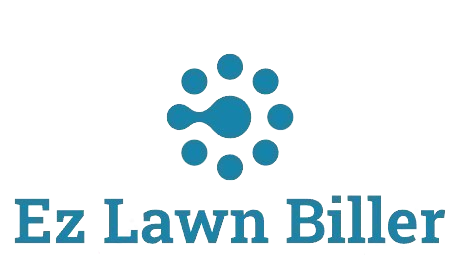Avoiding common scheduling mistakes can save time and enhance productivity for any business.
Avoid These Common Schedule Management Mistakes
Proper schedule management is a critical component for the success of any organization. In today’s fast-paced work environment, efficient scheduling not only optimizes workflow but also boosts employee morale and client satisfaction. This blog post will delve into common scheduling mistakes that businesses often make, providing insights and actionable tips to improve time management and productivity.
When it comes to managing schedules, many organizations find themselves grappling with inefficiencies and errors that can have a ripple effect on their overall performance. These mistakes can range from over-scheduling staff to poor communication regarding task assignments. Understanding these pitfalls is the first step toward creating a streamlined, effective scheduling process.
This article will explore several key mistakes to avoid, backed by expert opinions, statistics, and practical examples. By the end, you’ll be equipped with the knowledge to enhance your scheduling practices and improve your business operations.
1. Failing to Utilize Technology
In an era where technology plays an indispensable role in business operations, failing to leverage scheduling software can be a significant oversight. Many businesses still rely on outdated methods, such as spreadsheets and paper planners, which can lead to disorganization and inefficiencies. The lack of automated systems can result in missed appointments, double bookings, and confusion among team members.
Research shows that organizations using dedicated scheduling tools experience up to a 30% increase in productivity. These platforms, like [Lawn Biller Software](https://ezlawnbiller.com/), automate tedious tasks and allow for seamless updates and communication. Imagine a lawn care business using a lawn service app to schedule jobs, track employee availability, and send reminders to clients—all in one place!
Furthermore, adopting technology enables better data analysis. You can track patterns, allowing you to forecast busy periods and adjust staffing accordingly. By investing in service company software, you’re not only improving your scheduling efficiency but also enhancing overall business intelligence.
2. Ignoring Employee Input
One common mistake in scheduling is neglecting to consider employee preferences and input. Employees who feel their availability and preferences are ignored tend to be less engaged and productive. For instance, a lawn care company scheduling crew members without consulting them may face dissatisfaction and high turnover rates.
Encouraging employees to provide input about their schedules fosters a sense of ownership and responsibility. Regular check-ins and soliciting feedback can help identify potential issues before they escalate. For example, using a lawn service computer program to allow employees to indicate their preferred working hours can facilitate a more cooperative work environment.
Additionally, flexibility is key. Implementing a system that allows for shift-swapping or adjustments can lead to increased job satisfaction and, in turn, better service delivery to clients. Empowering employees to have a say in their schedules leads to a happier workforce and, ultimately, better business outcomes.
3. Over-Scheduling Staff
While it may seem beneficial to schedule employees for as many hours as possible, over-scheduling can lead to burnout, decreased morale, and a decline in productivity. It’s essential to strike a balance in scheduling that allows for adequate rest and personal time. A well-rested employee is generally more productive and engaged.
For instance, if a lawn mowing team is scheduled for back-to-back jobs without breaks, they may become fatigued, leading to sloppy work and dissatisfied clients. Understanding the limits of your workforce is crucial. A practical approach is to conduct regular workload assessments to ensure your scheduling is manageable.
Moreover, using a lawn company app can help monitor employee workload and hours worked. By keeping an eye on these metrics, you can make adjustments as necessary, preventing burnout and promoting a healthier work-life balance.
4. Lack of Clear Communication
Communication is the backbone of effective scheduling. A common mistake is failing to communicate schedules clearly to all team members. When employees are unaware of their tasks or schedules, it leads to confusion and inefficiency. For example, if a lawn service app does not provide timely updates about changes in schedule, it can result in missed appointments and unhappy clients.
To improve communication, utilize tools that allow for real-time updates. Scheduling software often includes features such as automated reminders and notifications. These ensure everyone is on the same page, reducing the chances of scheduling errors. A well-informed team can operate more cohesively, enhancing overall service delivery.
Additionally, establishing a standard protocol for communicating changes can streamline the process. Whether it’s using a dedicated chat platform or a scheduling app, having a clear communication channel is fundamental to effective team coordination.
5. Failing to Plan for Contingencies
No one can predict the future, and unexpected events will inevitably arise. A common scheduling mistake is not accounting for contingencies, such as employee absence due to illness or emergencies. The lack of a backup plan can lead to operational disruptions.
To combat this, it’s vital to build flexibility into your scheduling. Maintaining a pool of on-call staff or cross-training employees can help ensure that operations continue smoothly even when unforeseen circumstances occur. For example, a lawn care business might train multiple employees to perform various tasks, enabling them to step in as needed.
Additionally, implementing a robust lawn service software can help manage these situations effectively. Such programs often allow for quick adjustments and can notify clients of any changes, thereby maintaining transparency and trust.
6. Neglecting Regular Reviews
Many businesses make the mistake of creating a schedule and then forgetting about it. Regular reviews of your scheduling practices are vital for continuous improvement. Without analyzing your scheduling effectiveness, you may miss opportunities to optimize processes.
Conducting periodic evaluations can help identify trends, inefficiencies, and staff input. For instance, analyzing service company software data can reveal peak times for services and help you better allocate resources. Regular reviews also provide an opportunity to gather feedback from team members about what’s working and what’s not.
Moreover, setting aside time for team discussions regarding scheduling can foster a collaborative atmosphere. This can lead to innovative solutions and enhancements that benefit the entire organization.
7. Inadequate Training on Scheduling Tools
Another common mistake is failing to provide adequate training for employees on scheduling tools. Even the most advanced lawn company computer program can become ineffective if users do not know how to utilize it properly. Employees must be comfortable and proficient with the tools at their disposal.
Investing in training sessions can significantly improve how staff interacts with scheduling software. For example, a lawn service app should come with a comprehensive onboarding process that guides employees through its features and functionalities. This boosts confidence and reduces errors in scheduling.
Additionally, ongoing training and support are crucial. As software updates and new functions are introduced, regular training sessions can keep everyone informed and proficient, ensuring that your scheduling process remains efficient and effective.
Conclusion
In summary, avoiding common scheduling mistakes can lead to significant improvements in operational efficiency, employee morale, and client satisfaction. By embracing technology, encouraging employee input, maintaining clear communication, and planning for contingencies, businesses can create a dynamic scheduling process that meets the demands of today’s fast-paced environment.
Regular reviews, adequate training, and a commitment to flexibility will ensure that your scheduling practices are always evolving and improving. Remember that an effective schedule is not just a tool; it is a framework that supports the entire organization’s success.
As you reflect on your scheduling practices, consider how integrating a dedicated solution like [Lawn Biller Software](https://ezlawnbiller.com/) can streamline your processes and enhance your productivity. Embrace these insights, and take the first step toward more efficient schedule management today!




